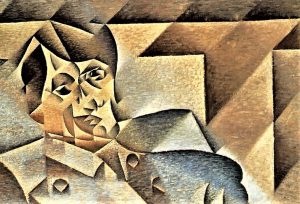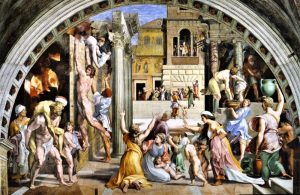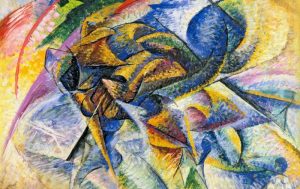Pottery
It comes from the Old French poterie, which means pottery. From ancient times to the present day pottery has become not only an art, but also a custom and a culture.

Related topics
Ceramic
What is pottery?
The art of creating using materials such as baked clay is called pottery. Throughout history, this discipline has been used to create pots, pans, plates, pots and pans, among other objects made using this technique. However, it is also called pottery to those objects made with clay and then cooked once.
Definition
“Pottery is popular ceramic, the most common, which was made in the villages for popular use. Then the ceramics came, everything that is decorated, with a sumptuary, artistic character.” Emili Francés Sempere.
History
The first creations based on pottery date back to the Paleolithic period, as jars and vessels were found, although their size was small, it is also considered relevant, the oldest known piece is a vessel from Jōmon period, Japan (10,000 BC/8,000 BC). This piece is currently exhibited in the National Museum in Tokyo.
In Latin America, specifically in Peru, very old objects have been found, such as those of Kotosh–Huayrajirca (1850 B.C.). These containers, generally painted in red and yellow, not only served the function of containers, but were also used as decoration of the environment, and in some cases were even implemented in religious rituals.
The first specialized craftsmen appeared in Mesopotamia, these invented the tools to work better the clay, such as the potter’s wheel and the oven to cook it; Strabo and Pliny gave themselves to the idea of innovating with the potter’s wheel.
Characteristics of pottery
The main characteristics of pottery are:
- Symbology.
- Religious value.
- Utilitarian and domestic objects.
- Ceremonial.
- Decorative.
Types
The different types of pottery that exist are the following:
- Hollow work: Those creations that have the shape of a jar, with a high body with the upper part open and with a considerable depth, these can be covered to preserve food or liquids, tend to have handles to facilitate the grip and transfer.
- Open work: These pieces have a wider upper opening than the base of the whole creation, that is to say, plates, dishes and lids, added to this in this category are included works that are short walls of 3 to 5 centimeters, these are identified as pots, some are flat base and concave bottom, such as mortars or pots.
- Closed work: They are characterized for having the bodies neatly closed, concluding the piece with a closing, a slight example of these are the money boxes and canteens.
- Flat work of mold: Pieces dedicated essentially for construction, the material is emptied in a mold, it is waited to dry and when it is dry it is demolded, in this way objects such as bricks, tiles and tiles are obtained.
Tools
The potter’s wheel, commonly divided between a lathe and a fast lathe, has evolved from time to time, starting as a wheel with a short axis, which was very unstable and its use was almost null; then there was the appearance of the long axis wheel, with a diameter of almost one meter and an axis of 25 cm.
With time the wheels of spool and crosses, of suspense disc or lathe of spool, of disc of cross or wheel of crosses became known, after this the modern lathes and the electric lathes appeared, which are being used at the present time.
Some auxiliary tools are the following:
- Wire.
- Bramante.
- Sedative.
- Thread.
- Sponge.
- Fabric puller.
- Emptyer.
Materials
Many materials are used in pottery, among them all stand out:
- Clay.
- Mud.
- Water.
- Silica.
- Lead.
- Sometimes alabaster powder is used.
Techniques
- Hand modeling: This technique is the most primitive, the pieces are built thanks to the stretching of the paste in rolls, plates or balls of clay, joined by barbotine, a liquid clay that acts as glue; after the piece is finished it is smoothed with the moistened hand so as not to spoil the final result. This technique is not indicated to create series of identical fragments, however, thanks to this the artist expands his imagination.
- Potter’s wheel: Known as a slow lathe, which is an artifact formed by a pivot and a wheel driven by the hand that produces a rotation movement, this facilitates manual work as it acts as a rotating base.
- Lathe Modeling: Called a fast lathe, the pieces made in this tool are commonly completed manually, however, is the most used if you want the final product to be identical and thus distribute it in series.
- Pouring modeling: Here, a mold is used to achieve the figure, it is mainly used in the industrial field, the liquid clay is poured into a plaster mold, until it hardens a little and dries in the medium term, then it is demolded, some imperfections are corrected and it is waited until it dries completely.
Elaboration process
Mainly, the clay is kneaded, hoping in this way that humidity and other particles are distributed homogeneously, eliminating the probability that air bubbles remain in the material, if there is any air capsule left at the time of baking can cause an explosion. After this, it is molded manually or through various tools explained above, water is used to maintain the plasticity of the clay during molding in order to avoid fractures or cracks.
Subsequently, the piece is taken to the open air, until it dries and hardens enough, however, at this stage of the process the pieces are very delicate and brittle, therefore must be handled with extreme subtlety, when the piece is dry in its entirety, its color is lighter and becomes harder, artisans tend to pass a fine sandpaper or a damp sponge to polish it.
This is how it is taken to the oven, where it is expected to lose moisture and acquires greater strength and sonority, with this last stage of baking the piece is finished and you can admire the final product.
Pottery objects
- Anaphre.
- Alphardon.
- Epinometer.
- Brick.
- Glasses.
- Plates.
- Pots.
- Vases.
- Decorative objects.
Mapuche pottery
The Mapuches were good potters, the findings with respect to these in Chile reached their greater fame, the pieces of the atacameños stand out, whose beauty in lines and decorative drawings were admirable.
Arabic Pottery
Pottery is relevant in Islamic art, Muslims found baked clay extremely interesting and ideal for experimenting with ornamental techniques and procedures; however, they use these pieces of art to highlight ancient traditions, aesthetics and decoration is paramount for these artists.
Roman pottery
They are characterized by being diverse productions, based on ancient traditions and divinities, which made them exploit their commercial potential and spread, they tend to be luxurious, their finish is neat and sophisticated.
Importance
In addition to being a type of art that is crucial for social development, this is the origin of architecture, because without this procedure it is not known if there would be large-scale buildings, or houses or shopping centers, which we enjoy today; not only that, we have thanks to this art, plates, glasses, packaging and other useful resources.
How to cite this article?
Briceño V., Gabriela. (2019). Pottery. Recovered on 3 January, 2025, de Euston96: https://www.euston96.com/en/pottery/









